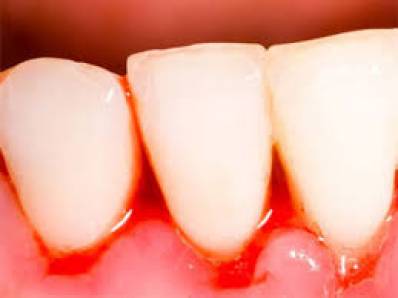Brushing your teeth is supposed to be a routine task—one that leaves you feeling fresh and ready to face the day. But what if, instead of just minty freshness, your sink is full of blood-tinged foam? Bleeding gums can be unsettling, and they might leave you wondering if something is wrong. Let’s take a closer look at why your gums might bleed when you brush, what it means, and what you can do about it.
Understanding Bleeding Gums: The Most Common Causes
Bleeding gums when brushing is more common than you might think, and there are several potential causes. Here are the top culprits:
1. Gingivitis: The Sneaky Beginning of Gum Disease
The most common reason for bleeding gums is gingivitis, the early stage of gum disease. Gingivitis occurs when plaque builds up on your teeth and along the gumline, causing inflammation. The good news? It’s usually reversible with better oral hygiene. Dr. Emily Thompson, a periodontist, says, “Many patients experience bleeding gums due to poor brushing technique or neglecting flossing. Improving these habits often resolves the issue in just a few weeks.”
2. Brushing Too Hard: More Isn’t Always Better
Sometimes, the issue isn’t plaque at all—it’s you. Brushing too aggressively can damage your gums and lead to bleeding. Switching to a softer-bristled toothbrush and adopting a gentle, circular brushing motion can often resolve this problem.
Case Study:
Michelle was determined to maintain perfect dental health. She brushed her teeth twice a day—sometimes three. Her dentist found no signs of gum disease but noticed her gums were frequently bleeding. The culprit? Michelle was brushing with far too much force, believing “harder” meant “cleaner.” Switching to a softer touch made all the difference, and her gums healed within weeks.
3. Vitamin Deficiency: Your Body Needs More
A deficiency in vitamins—particularly vitamin C or vitamin K—can lead to bleeding gums. Dr. Kevin Singh, a nutritionist, mentions that poor diet habits can easily lead to this issue. “Not getting enough vitamin C affects gum tissue and makes bleeding more likely,” Dr. Singh notes. He recommends incorporating foods like bell peppers, citrus fruits, and leafy greens for a boost.
Other Potential Triggers
- Medications: Blood thinners are notorious for causing gums to bleed more easily. If you’re taking medications like aspirin or warfarin, talk to your healthcare provider if you notice bleeding.
- Hormonal Changes: Pregnancy, puberty, menstruation, and menopause can make gums more sensitive. This often leads to increased bleeding during brushing.
- Misaligned Teeth or Dental Appliances: If your teeth are crowded or if you wear braces, you may find certain spots harder to clean effectively, leading to localized gingivitis and bleeding.
Real-Life Experience: John’s Gingivitis Scare
John was shocked when he noticed bleeding every time he brushed his teeth. He considered it normal for a few months, until his gums became swollen and tender. A visit to his dentist revealed early-stage gingivitis. John improved his flossing routine, added an antiseptic mouthwash, and started using a soft-bristled toothbrush. Within two months, the bleeding had stopped completely.
When to Worry About Bleeding Gums
Not every case of bleeding gums is a reason for panic. However, there are signs that you should watch out for:
- Persistent Bleeding: If your gums bleed consistently for over two weeks, it’s time to see a dentist.
- Swelling, Redness, or Pain: These are indications of inflammation that needs professional intervention.
- Receding Gums or Loose Teeth: Bleeding coupled with these symptoms may indicate advanced periodontal disease, which requires immediate care.
Dr. Thompson advises, “If you’re seeing blood in the sink regularly, don’t ignore it. The earlier we address gum disease, the more manageable it is.”
How to Stop the Bleeding: Actionable Tips
1. Upgrade Your Oral Hygiene Routine
Improving your brushing and flossing technique can make a huge difference. Aim to brush twice a day with a fluoride toothpaste and floss daily. It may take a couple of weeks to see improvements, but consistency is key.
2. See a Dental Professional
If you’ve tried improving your habits and the bleeding persists, it’s time to see a dentist or hygienist. They can perform a professional cleaning and assess whether gingivitis or a more serious issue is at play.
3. Get the Right Tools
Use a soft-bristled toothbrush to avoid further irritation. Electric toothbrushes can also be helpful, as they ensure even pressure and effective cleaning without overdoing it.
4. Dietary Changes
Add more vitamin C and K-rich foods to your diet. Think berries, spinach, broccoli, and oranges. A balanced diet can contribute significantly to better gum health.
5. Mouthwash as a Sidekick
Antibacterial mouthwashes can help reduce plaque buildup, but they should be used as a supplement to, not a substitute for, brushing and flossing.
What People Are Saying
Maria, a dental hygienist, notes that patients often wait too long to address bleeding gums. “They’re scared it’ll be expensive or painful to fix, but gingivitis is one of the easiest things to treat if caught early,” she says. “A good cleaning and consistent home care routine can turn things around within weeks.”
Final Thoughts: Treat Your Gums with Care
Bleeding gums are a common sign that something is amiss, but they’re also a helpful early warning. Whether it’s an overly vigorous brushing technique, poor flossing habits, or something more serious like gingivitis, taking action sooner rather than later can save you a lot of discomfort and costly treatments down the line. Healthy gums don’t bleed—and your goal should always be to keep them in that state.
If you’ve noticed your gums bleeding, consider it an invitation to improve your oral health game. A soft touch, a better diet, and a little attention to detail can go a long way in keeping your smile healthy for years to come.






